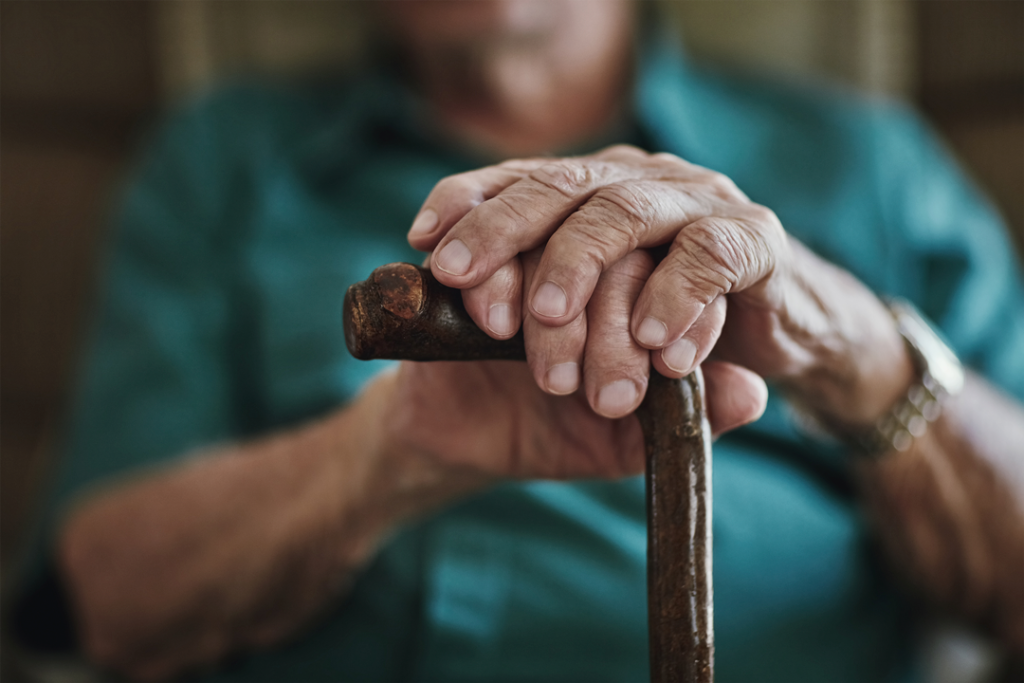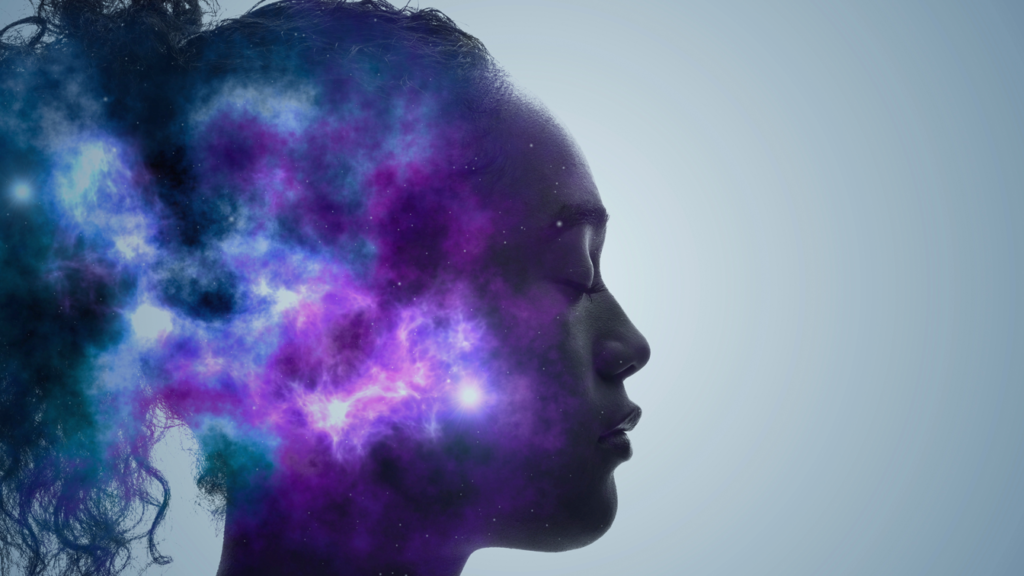ARTICLE
The Most Important Takeaways From #mbgrevitalize 2019

This past weekend, mindbodygreen held its 6th annual #mbgrevitalize event, and we were there to capture the magic! This year’s theme was Longevity, Consciousness, and Community – in which hundreds of wellness leaders gathered in Dove Mountain, Arizona, to discuss what it really means to be conscious, to form meaningful connections, and to inspire lasting change in our communities.
Some of this weekend’s conversations were admittedly tough, but undeniably enlightening. And it’s doing the difficult work that helps us be and create the change we wish to see in the world. Continue reading to learn some of the biggest takeaways from this year’s #mgbrevitalize.

For the first time since World War I, life expectancy in the United States has declined for 3 years in a row.
On average, life expectancy across the globe has been steadily increasing over the past several decades; however, reports from the Centers for Disease Control and Prevention (CDC) show that life expectancy in the United States has actually dropped for three consecutive years. This has largely been in part because of the country’s ongoing drug crisis and climbing suicide rates. This is notably the first time that researchers have seen this disturbing result in the U.S. since the 1915-1918 time frame, during which World War I and a flu pandemic took place.
Here are the CDC’s most recent reports highlighting life expectancy and mortality rates in America:
Mortality in the United States, 2017
Drug Overdose Deaths in the United States, 1999–2017
Suicide Mortality in the United States, 1999–2017

People feel lonely because of social constructs and conditioning.
Loneliness is a universal yet relatively complex human emotion. It is typically associated with anxious feelings due to lack of connection or communication with others, and it has been shown to lead to poorer physical and mental health over time (NCBI).
So, what causes us to feel lonely?
The first time that most people experience loneliness is when their parents leave them alone as infants. As they age, they may experience temporary loneliness in different contexts, such as going through a divorce, losing someone important in their life, or being outcasted from a social circle. The cause and severity of loneliness really varies from one person to another, as there could be social, mental, emotional, and/or physical factors at play.
Deepak Chopra, co-founder of the Chopra Center for Wellbeing, and a world-renowned pioneer in integrative medicine and personal transformation, argues that people feel lonely because of social constructionism – the theory that much of what we perceive as reality depends on shared assumptions (ThoughtCo). Examples of social constructs include things like the concept of currency, which people have collectively given importance and value, as well as the self/self-identity (gender, age, sexual orientation, race, social class), which can affect one’s self-esteem.
Chopra insists that reality doesn’t exist; we are all having an individual human-specific experience. For us humans, subjective experiences occur in the form of sensations, images, feelings and thoughts (Deepak Chopra). While we were sitting in the audience listening to Chopra share his wisdom on the mainstage at #mbgrevitalize, we could feel his calm demeanor and see his gentle smile as he spoke. Unlike us humans, Painted Lady Butterflies have 30,000 lenses in each eye; if one of these butterflies were looking at Chopra on stage, they would see a kaleidoscope of moving shapes but would not have the same emotional connection or experience that the people in the audience had. If you put this into the context of a romantic relationship, subjective experiences often contribute to why couples may see a situation or event in their relationship differently.
The mind is an embodied and relational process that regulates the flow and energy of relationships.
Mental Illness is defined as thinking locally and acting as a separate self.
Chopra says that when we are babies, we are filled with curiosity and wonder. But as we age, and we become conditioned by social constructs, we begin to build a separate self—one that can fill us with anxiety, pressure and fear. But this separate self is not who you truly are.
This is the foundation for a science of consciousness, as consciousness is total freedom from conditioning and constructs. By having more awareness of your loneliness when it comes, you can acknowledge it and let it go.

Mind-altering substances may have a place in the wellness space, but it’s still out for debate.
Hallucinogens (drugs that profoundly distort a person’s perceptions of reality) have been studied in the U.S. for their potential healing benefits since the discovery of LSD in the 1940s. However, research has mostly stagnated since psychedelics were outlawed in the late 1960s. (APA) Given the current state of drug use in America, there is a lot of controversy over whether or not mind-altering substances can actually be harnessed for good.
According to Cristina L. Magalhaes, PhD, and co-chair of a symposium on psychedelics and psychotherapy, “Combined with psychotherapy, some psychedelic drugs like MDMA, psilocybin and ayahuasca may improve symptoms of anxiety, depression and post-traumatic stress disorder. More research and discussion are needed to understand the possible benefits of these drugs, and psychologists can help navigate the clinical, ethical and cultural issues related to their use.”
The “Mind-Altering Substances and Wellness” session at this year’s #mbgreviatlize discussed what role psychedelic drugs should play in wellness. The panel included Holistic Psychiatrist, Ellen Vora, M.D., Physician, Molly Aloof, M.D., Whole30 Co-Founder and CEO, Melissa Hartwig Urban, and Wellness Advocate, Rich Roll. It’s worth nothing that both Urban and Roll have had their own downfalls at the hand of drugs and alcohol, which ultimately served as the catalysts for each of their health journeys. They have successfully used their experiences to find their purpose in life: to help others live healthier and sober.
From a psychological perspective, there are both potential pros and cons when it comes to the use of hallucinogens for healing. Some people may experience breakthroughs while using these drugs that allow them to get un-stuck, overcome depression, and/or come to powerful realizations. On the flip side, all it takes is one bad trip (frightening hallucinations or delusions that can lead to accidents) to put a person in serious danger. If someone is predisposed to mental health issues, they are more likely to experience bad trips.
Keeping the current drug-use problem in mind, many people are getting hallucinogenic drugs off of the street because of the ease of accessibility. It’s nearly impossible to know the quality of these drugs and where they originally came from. “These [hallucinogenic] drugs are essentially medicines, and they need to be approached with the same gravity as pharmaceuticals,” said Vora. If you are thinking of experimenting with mind-altering substances like LSD, PCP, or ketamine, it is vital that you consult with a doctor. Remember: this is your brain that we are talking about, and you only get one. So, you need to be mindful of the possible side effects of hallucinogens, and how they can affect your life after using them. These drugs are not meant to be taken in isolation; it’s recommended that you have someone you trust by your side so that they can monitor you and keep you safe while you’re using the drugs.
From an economic standpoint, there’s high interest in commercializing drugs – especially if they are considered illegal and in high demand. Fun fact: In today’s pharmaceutical market, it often takes more than a decade and an estimated $2.6 billion to bring a new drug to market (Booz Allen). So, between now and the time that hallucinogens are officially launched to the public, more research needs to be done on how different types of halogens affect the brain, overall health, and decision making. We also need a better understanding of how different dosages can impact people that have varying biomarkers (e.g. PTSD, bipolar disorder, depression, etc).
The bottom line: there is so standard or single solution when it comes to using psychedelic drugs for healing. There is room for experimentation, but it needs to be done in controlled, safe settings so that researchers can continue to evaluate what dosages are appropriate for whom, and under what circumstances. Regulation that puts peoples’ health first, above simply making profit, will be of utmost importance. It will take conscious leadership of medical practitioners, as well as state and local governments to help make this happen. Research shows that there are 9 key factors that affect one’s ability to heal from cancer. There have been thousands of documented cases of “incurable diseases”, in which people have fully recovered from their diagnosis and reclaimed their lives. Most of these case studies have revolved around people that have stage 4 cancer, but there have also been documented cases of healing from heart failure, autoimmune diseases, and HIV.
Were these people just lucky? Or did they play some kind of active role in their own recovery?
Kelly A. Turner, PhD, studies people who have experienced what she calls “radical remissions.” She’s written a book about them, and is currently working on a docuseries. What Kelly discovered is that the people who have achieved radical remissions don’t just sit in misery or wait for a miracle to cure them. During their healing process, they proactively made nine distinct conscious changes in their lives – only two of which are considered physical while the remaining seven are classified as emotional changes.
Here are the 9 key factors that Turner has identified as aiding forces behind radical remissions:
- Radically changing your diet.
- Taking control of your health.
- Following your intuition.
- Using herbs and supplements.
- Releasing suppressed emotions.
- Increasing positive emotions.
- Embracing social support.
- Deepening your spiritual connection.
- Having strong reasons for living.
Though there are no promises that following these tips will absolutely cure cancers or other illnesses, there is very interesting research that indicates cancer treatments may have better outcomes if they take a more holistic approach rather than just relying on surgery, chemotherapy, and/or radiation.
While recovery is important, prevention is also key to living a life of longevity. Did you know: people on average go into a stressful state as much as 50 times a day? This causes us to miss out on dopamine (an important brain chemical that influences your mood and feelings), and increases our cortisol levels. Often called the “stress hormone,” cortisol triggers the natural “flight or fight” response that has kept humans alive for thousands of years. The danger of having high levels of cortisol too often is that it means you are constantly in high-stress mode. If your body experiences chronic stress, then it will begin to break down over time (Premier Health).

“Chi” is a Chinese word meaning “life force energy”. Some alternative medical practitioners believe that having low chi means that you’re too low on your life force, and that you’re more susceptible to being affected by illness and disease. Turner says that having a strong sense of purpose in life can help draw more chi into the body. This may also help you prevent your body from becoming more susceptible to disease. To live a long life, you should be like a gorilla that eats in Italy. Ok, not literally, but eating lots and lots of plants is really good for you, and nutrition is directly related to longevity. Here are the top myths about longevity that you should be aware of:
Myth: The Mediterranean Diet is 100% healthy for you.
Fact: More research needs to be done, but here’s what we know. This particular diet is based on the habits of people from Italy, Greece, and Spain. This part of the world is considered a blue zone area — blue zones are regions of the world where people appear to live much longer than average. It includes the consumption of things like legumes, fish, fruit, vegetables, and olive oil. It’s that last ingredient that researchers think may be the key health-promoting part of the diet.
Steven Gundry, M.D. argues that the Mediterranean Diet is pretty healthy for most people to adopt, except that it includes foods that have lectins. Lectins are a type of plant protein that can be found in almost all foods, but the foods that are believed to be highest in lectins include whole grains and legumes, and nightshade vegetables, like tomatoes, peppers and potatoes (Genuine Health). The problem is that our bodies have not adapted to the lectins found in these foods. They can be difficult to digest, toxic even (if not cooked properly), which negatively affects the microbiome and puts you at greater risk of disease. Gundry says that you should focus on consuming plants that don’t have these lectins, as well as foods with high omegas, and olive oil. Lots and lots of olive oil! (People in Italy, Greece and Spain regularly consume an average of 1 liter of olive oil per week (12-14 tablespoons per day).
Myth: Animal protein is essential for strength and longevity.
Fact: Simply put, gorillas and horses disprove this. They only eat plants, and they are both strong and HUGE!
Myth: Growth hormones produce youthfulness and vitality.
Fact: Being smaller in size may actually help promote vitality, not being bigger. Gundry points out that most of the people who live in the Blue Zones are far shorter than average height. Women are also typically shorter than men. Research shows that they have lower rates of coronary heart disease than men and on average live about seven years longer (MindBodyGreen).
Myth: It’s important to consume iron as you age.
Fact: Iron is an essential metal for the body, but excessive iron consumption is dangerous for mitochondrial function and causes organ dysfunction through the production of reactive oxygen species (NCBI).
Myth: Milk does the body good.
Fact: Milk has huge amounts of insulin growth factor in it, which mother cows give to their babies to help them grow. Humans are the only species that consumes other animals’ milk, and humans on average are much bigger than they were decades ago. But humans are not baby cows! Aging can’t be stopped, but the process can be slowed. For the average person, genes account for 25% of longevity, and environment accounts for 75%. As we age, we experience more “wear and tear”. Examples of wear and tear include, but are not limited to: exposure to and consumption of toxins, injuries, and sun exposure – all of which lead to instability of the genome (the genetic material present in a cell or organism) and DNA damage. The problem is that our body’s repair mechanisms slow down over time.
Anti-aging facts you should be aware of:
- The insulin-signaling pathways are responsible for blood sugar regulation, which is at the core of anti-aging.
- Autophagy is like your body’s garbage disposal, it allows the cells in your body to cleanse themselves by removing unnecessary or dysfunctional components.
- There are pathways that stimulate growth and other pathways that stimulate autophagy.
- As you age, there should be a shift in habits from growth to preservation. In other words, it might be more important to focus on your diet as you get older, whereas working out the way you used to could be excessive strain on your body that adds more wear and tear.
- NAD+ is crucial for cellular repair and mitochondrial maintenance.
- According to Frank Lipman, “There isn’t really a magic bullet for anti-aging, but if there were one, it would be sleep.”
When it comes to preserving the body, remember this: our daily habits have the opportunity to have extraordinary effects on our health and longevity.
“Get more sleep, eat less, and love more.” – Robert Roundtree Humanity is evolving. A pessimistic view of the world narrowly focuses on the problems that exist, but despite what the news may say, the world isn’t all bad. In fact, history shows that humans have taken great strides to improve social and economic conditions over the past couple of centuries, as well as access to greater technology, people, and experiences. For reference, check out this timeline of U.S. history:
- 200 years ago (early 1800s), 90% of people lived on $2/day.
- In 1865, slavery was abolished.
- Nearly 100 years ago (1920), women could finally vote.
- In 1964, Jim Crow Laws were abolished.
- In 1983, the internet was invented. The World Wide Web was later developed in 1990. This meant that people now had access to information from all over the globe.
- Smartphones were created in 1992, which resulted an entirely new and fast way to help people stay connected.
- Since the early 2000’s, many businesses with a shared-economy model (such as Uber and Airbnb) have empowered more people to travel and share experiences with others on their own terms.
Here’s the now. Though there have been times of war and corruption, history shows that humankind has collectively been moving toward greater connection. There is undoubtedly a greater sense of what is morally right and wrong, and what defines conscious leadership. According to John Mackey, Cofounder and CEO of Whole Foods Market, and coauthor of Conscious Capitalism: Liberating the Heroic Spirit of Business, conscious leaders:
- Are passionate
- Are service oriented
- Are authentic
- Have integrity
- Hold themselves accountable
- Have a high level of emotional intelligence
- Inspire people
- Mobilize energy
- Cultivate self-awareness
- Encourage growth in others and build confidence
Business is about people working together to create value for others. In order to be a conscious leader, one must create a shared purpose (Whole Food Market’s is to nourish people on the planet), and always strive to find the win-win-win solution in any given business situation.
“Can you build a business based on love?” – John Mackey
Business clichés are notably often centered around sports, battle, or the ego – all of which reinforce the idea of focusing on the competition and contracting oneself instead of leading with an open heart and consciousness. When we lead with fear, we are at greater risk of destroying opportunities, relationships, sales, product launches, and employee morale. That’s why it is essential to eliminate fear in business – in order to minimize the risk of short-circuiting love. The many faces of love include, but aren’t limited to:
- Gratitude
- Care
- Compassion
- Appreciation
- Forgiveness
